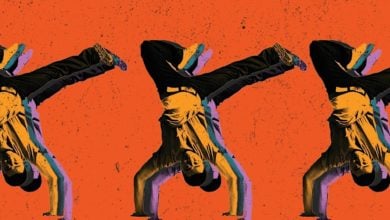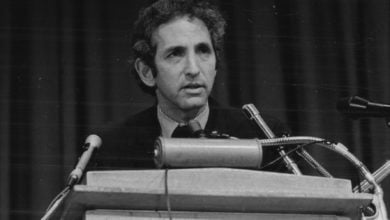People around the world mourned when Prince Rogers Nelson, better known simply as Prince, died on April 21. Prince was a prominent musician, releasing 39 studio albums between 1979 and 2015. Many of his songs, including the famous 1999, When Doves Cry and Purple Rain, quickly became pop-culture staples. As news spread of Prince’s death, dance parties sprung up across the country from the West Coast to the East in cities large and small. In Prince’s home city of Minneapolis, Mn., the nightclub First Avenue hosted a block party that drew thousands of people from the Midwest, many wearing Prince’s signature color of purple.
As a master multi-instrumentalist, Prince was also arguably one of the greatest musicians of recent time. His vocal range covered over 4 octaves, and he switched smoothly between registers. In addition to singing, Prince mastered the guitar, drums, keyboards and bass, playing nearly all the instruments on his first few albums.
He also pioneered the use of new technologies in his early career, using synthesizers and drum machines in the early 80s and computers in the late 1980s and early 1990s when few artists were using them.
Challenging preconceptions of masculinity and gender
Prince, along with David Bowie, who also died in early 2016, challenged societal ideas of masculinity in a very public way. During a super-masculine era of hard rock, thrash/power metal and leather jackets, Prince stood out. The lyric, “I’m not a woman. I’m not a man. I’m something that you’ll never understand,” from 1984’s I Would Die 4 U, embodies this approach to genderfluidity, or not fitting directly onto one of the binary poles of “male” and “female.” Instead, Prince lay somewhere in between, adjusting his appearance over time to fit whatever his current identity was. On the controversial cover of 1988’s Lovesexy, he appears nude, with shaved legs but showing a hairy chest, surrounded by traditionally feminine flowers.
As Frank Ocean wrote in his touching tribute to Prince, “He was a straight Black man who played his first television set in bikini bottoms and knee-high heeled boots, epic. He made me feel more comfortable with how I identify sexually simply by his display of freedom from and irreverence for obviously archaic ideas like gender conformity.”
Prince used his position as public sex symbol, taking the tradition of glam rockers as exemplified by Ziggy Stardust-era Bowie and making it his own, attacking basic expectations of what masculinity or femininity meant.
A history of activism
Though most well-known for his impact on the world through music, Prince also had a history of activism. He was a member of two unions: both the American Federation of Musicians (AFM) and the Screen Actors Guild – American Federation of Television and Radio Artists. One of the most famous acts of Prince’s career was in fact a protest against the greedy and unfair treatment of artists by major record labels.
Prince signed a recording contract with the record label Warner Bros, then Warner Music, at 18-years old. Throughout the late 1980s and early 1990s, he was engaged in a legal struggle over his contract. Record labels often use their teams of businesspeople and high-powered lawyers to take advantage of young and eager artists, forcing them into contracts that ultimately benefit the company with massive profits instead of rewarding the musicians that actually make the music they profit from.

In the early 1990s, Prince stood up to Warner, which had already made $300 million from Prince’s work and was demanding he release more albums more quickly. In protest of this exploitation and a further clause that would have retroactively granted Warner ownership to all of Prince’s back catalog dating back to 1978, he appeared on stage with the word “slave” written on his cheek. In 1993, he changed his name to a symbol, known as “The Love Symbol” and was referred to as “The Artist Formerly Known as Prince,” or simply “The Artist.” The Love Symbol also emphasized Prince’s genderfluidity, as it was a combination of the symbols for male and female.
To get out of his contract with Warner Bros, Prince quickly put out a series of albums that were not well-received by critics and did not do well financially for the label. In 1996, his first post-Warner release was the wonderful Emancipation, a three disc, 36-track epic, which was quickly followed by the hugely successful “Jam of the Year Tour.”
His lyrical activism spanned much of his career. In “Ronnie, Talk to Russia” from 1981’s “Controversy,” Prince sings of the dangers of nuclear war, “Ronnie talk to Russia before it’s too late,” referencing then-President Ronald Reagan and the escalating U.S. Cold War against the Soviet Union. 1999, one of Prince’s most well-known songs, was also a response to Reagan’s warmongering and nuclear threats against the USSR. In 1988’s Dance On, Prince addressed both nuclear proliferation (“Nuclear ban never stays in tune/They know all the words but the music is doomed”) and the social results of the wave of de-industrialization in major cities like Detroit (“It’s time for new education/The former rules don’t apply/We need a new power structure that breeds production/Instead of jacks who vandalize/Detroit what’s happenin’”).
On 2009’s Colonized Mind, he criticized the two-party system of the Republicans and Democrats in the United States: “Upload: a 2-party system/The lesser of 2 dangers/Illusion of choice/Download: a veiled form of fascism/Nothing ever really changes/You never had a voice.”
Prince also voiced his support for the Black Lives Matter movement and the struggle against police brutality. At the 2015 Grammies, he used his time on stage to say “Albums still matter. Like books and Black lives.” In 2014, he donated money to the family of Trayvon Martin, and his 2015 “Baltimore” is a tribute to Freddie Gray, Michael Brown and other victims of police terror.
When Prince passed in April, the world lost a beloved musical talent and pioneer who millions mourned in their own ways – privately with albums and very publicly with purple-themed dance parties. We should also remember Prince as an important public figure who materially and with his artistic expression contributed to progressive movements, especially the Black and LGBTQ struggles.





